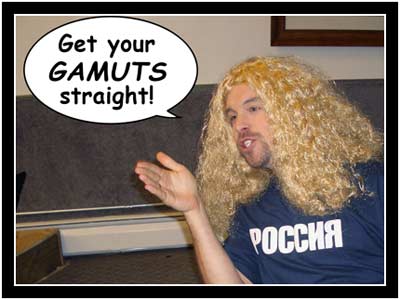Inside Joke
 Despite subscribing to the updates on Jane Espenson’s blog, I don’t really enjoy reading it. It’s mostly about writing spec scripts and what she had for lunch (what’s up with that?) The entries are short, however, and every once in awhile I pick up a worthwhile writing tip. Besides, she’s written episodes for some of my favorite TV series (Battlestar Galactica, Buffy the Vampire Slayer, Angel, Firefly, and Star Trek: Deep Space Nine), so that’s interesting.
Despite subscribing to the updates on Jane Espenson’s blog, I don’t really enjoy reading it. It’s mostly about writing spec scripts and what she had for lunch (what’s up with that?) The entries are short, however, and every once in awhile I pick up a worthwhile writing tip. Besides, she’s written episodes for some of my favorite TV series (Battlestar Galactica, Buffy the Vampire Slayer, Angel, Firefly, and Star Trek: Deep Space Nine), so that’s interesting.
Last week she discussed the defining characteristics of high-brow and low-brow jokes. High-brow jokes are ones that normally only high society types would understand. She demonstrated a joke she’d seen on Frasier. It was based on an opera I’d never heard of, Menotti’s Amahl and the Night Visitors –
And then, of course, on the ride home that night I caught an entire NPR segment on Menotti. I always wonder if things like that are coincidences or if they’re going on all around me and I’m just not tuned into them. Had I heard of Menotti’s opera before the one-two punch of blog-radio that day? Maybe I don’t remember because it wasn’t on my radar. No way to know.
– Low-brow jokes, on the other hand, appeal to a different class of people. She does a good job of deconstructing high- vs. low-brow. I never really stopped to consider that the distinction has nothing to do with whether the joke is good or bad, smart or dumb. The dividing line has to do with socio-economic boundaries. I inferred from her writing that a good joke, high-brow or low, probably shouldn’t even be understood by the opposite group.
